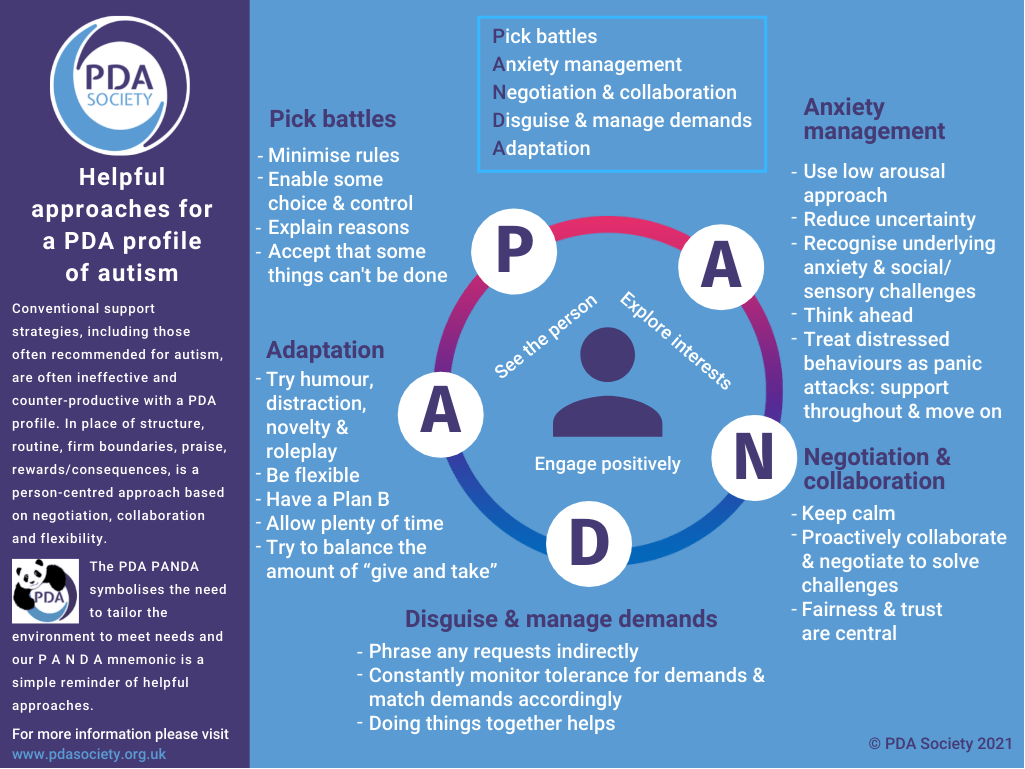
PDA stands for ‘Pathological Demand Avoidance, however is often better understood when reframed as ‘Persistent Drive for Autonomy.’
PDA is not a diagnosis within the DMS-5, but rather a descriptive profile, which exists as a feature of Autism. PDA occurs as a fight, flight, or freeze response, caused by anxiety that arises from ‘demands.’ These demands can include direct demands such as being told what to do, but also perceived demands, or a feeling of expectations placed upon oneself.

PDA will present differently in different people (e.g. some people may have a typical ‘fight’ response, whereas others may experience ‘flight’ or ‘freeze’ – task avoidance) but common traits of PDA are;
To support a child with a PDA profile, the PDA society (hyperlink to their site?) have developed the ‘PANDA’ Framework:

Following the PANDA Framework, a PDA child may have most success when supported through;

We acknowledge the land on which we operate as the traditional lands of the Kaurna people, and pay our respects to the spiritual relationship with country that all Aboriginal and Torres Strait Islander peoples hold.
Kid Sense is founded on inclusion and the belief that everyone is welcome. All diversity is celebrated, encouraged, represented and supported in our staff, our clients, and our community. You are welcome here.